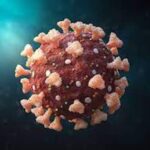India
healthysoch
Geneva, New Delhi, May 22, 2020 :
The Smithsonian Science Education Center, in collaboration with the World Health Organization (WHO) and the InterAcademy Partnership (IAP)—a partnership of 140 national academies of science, engineering and medicine—has developed “COVID-19! How can I protect myself and others?,” a new rapid-response guide for youth ages 8–17. The guide, which is based on the UN Sustainable Development Goals, aims to help young people understand the science and social science of COVID-19 as well as help them take actions to keep themselves, their families and communities safe.
Through a set of seven cohesive student-led tasks, participants engage in the activities to answer questions previously defined by their peers. The questions explore the impact of COVID-19 on the world, how to practice hand and respiratory hygiene and physical distancing, and how to research more information about COVID-19. The final task teaches youth how they can take action on the new scientific knowledge they learn to improve their health and the health of others. Each task is designed to be completed at home.
The guide includes updated research, activities, quotes from scientists and frontline public health officials, and physical and emotional safety tips on COVID-19. It also integrates inquiry-based science education with social and emotional learning and civic engagement.
“We are immensely grateful to WHO, the IAP, our colleagues at the Smithsonian and other senior project advisors and translators for their perspectives and technical support in ensuring the science is accurate,” said Carol O’Donnell, director of the Smithsonian Science Education Center. “We are also grateful to the Gordon and Betty Moore Foundation for their support during the development of this module. This work represents the power of collaboration and working closely with others across the globe, even during a time of physical distancing.”
“Through this project, the Smithsonian Science Education Center makes science exciting and approachable for children and youth all over the world and encourages them to learn by doing” said Dr. Soumya Swaminathan, chief scientist at WHO. “With all the myths and misconceptions out there, it is important for children and youth to understand the nature of this pandemic and what can be done to prevent future pandemics from happening,”
“It is so important for children—wherever they are in the world—to develop their scientific understanding and rational thinking,” said Professor Volker ter Meulen, president of IAP. “Only by being able to make rational decisions based on the best science and evidence can any of us adjust our behavior to keep ourselves and our families safe from infections such as COVID-19.”
The Smithsonian Science Education Center will disseminate the information to youth worldwide in collaboration with WHO, IAP, educators, and museum and research center networks. The guide is free, will be available to youth in more than 15 languages, particularly African and Asian languages, and can be found at https://ssec.si.edu/covid-19.
healthysoch







